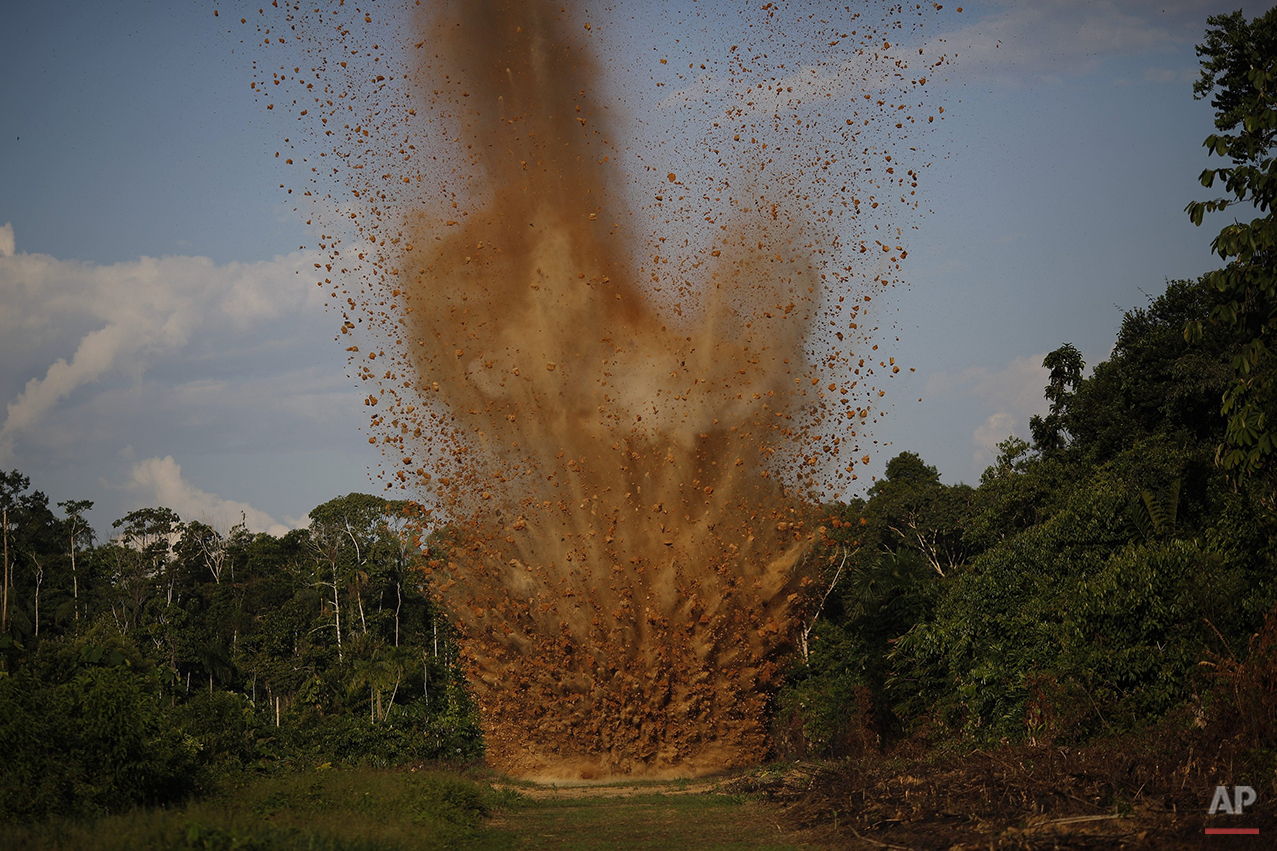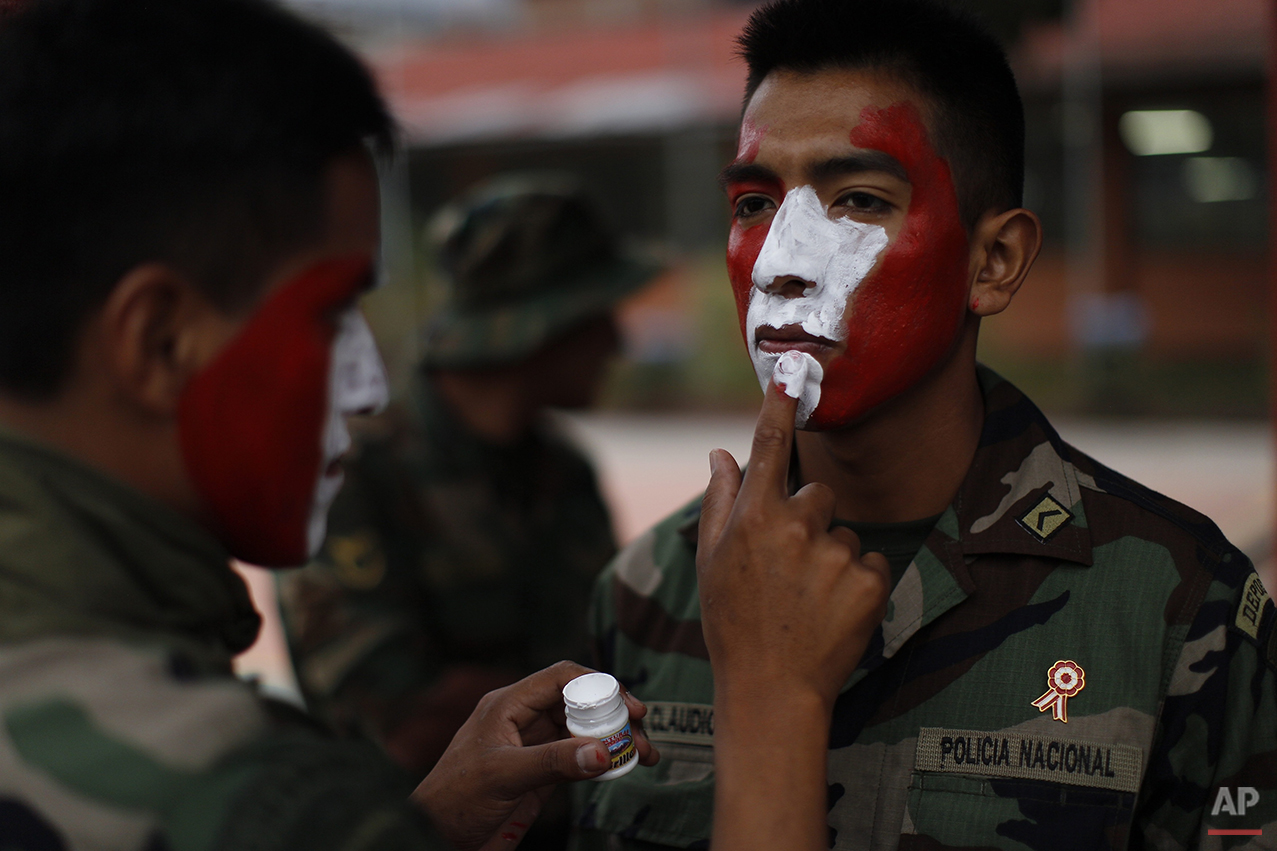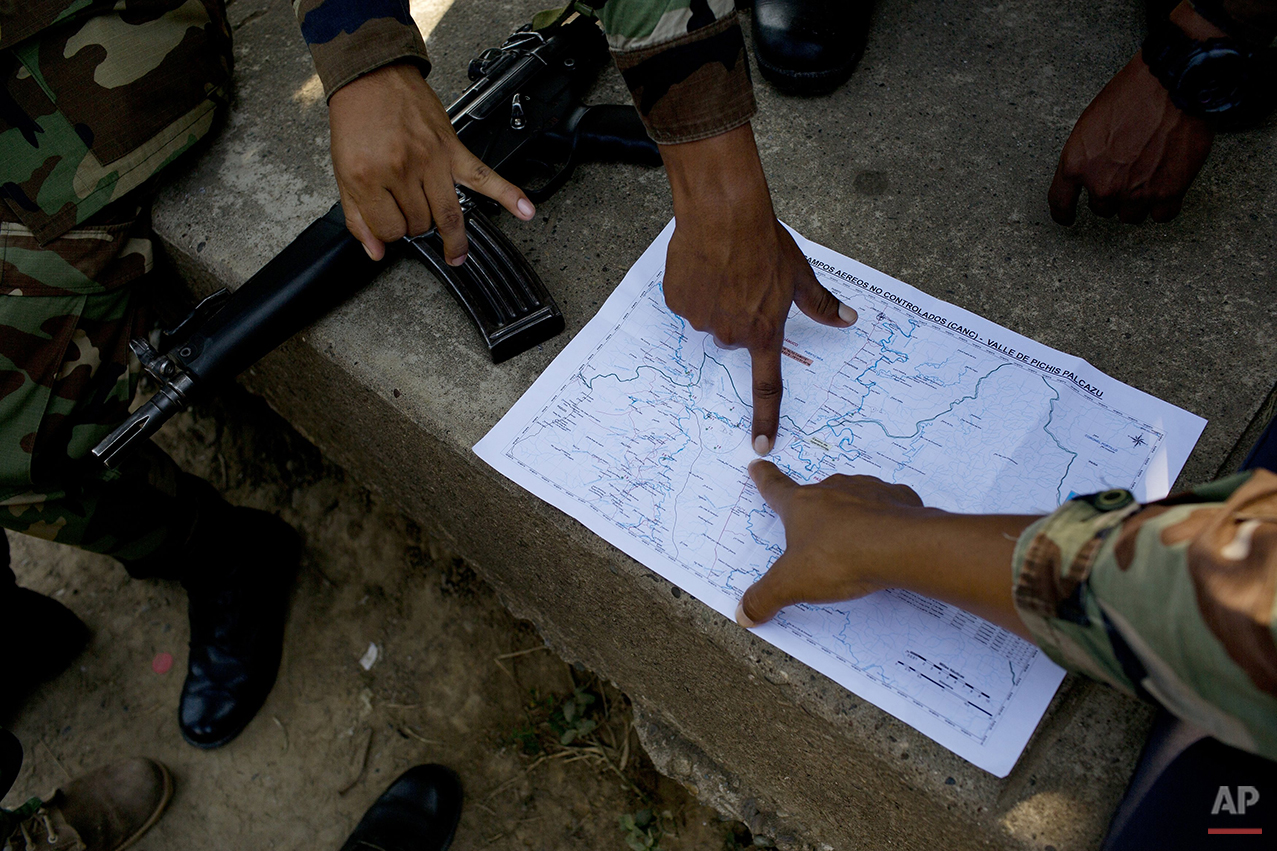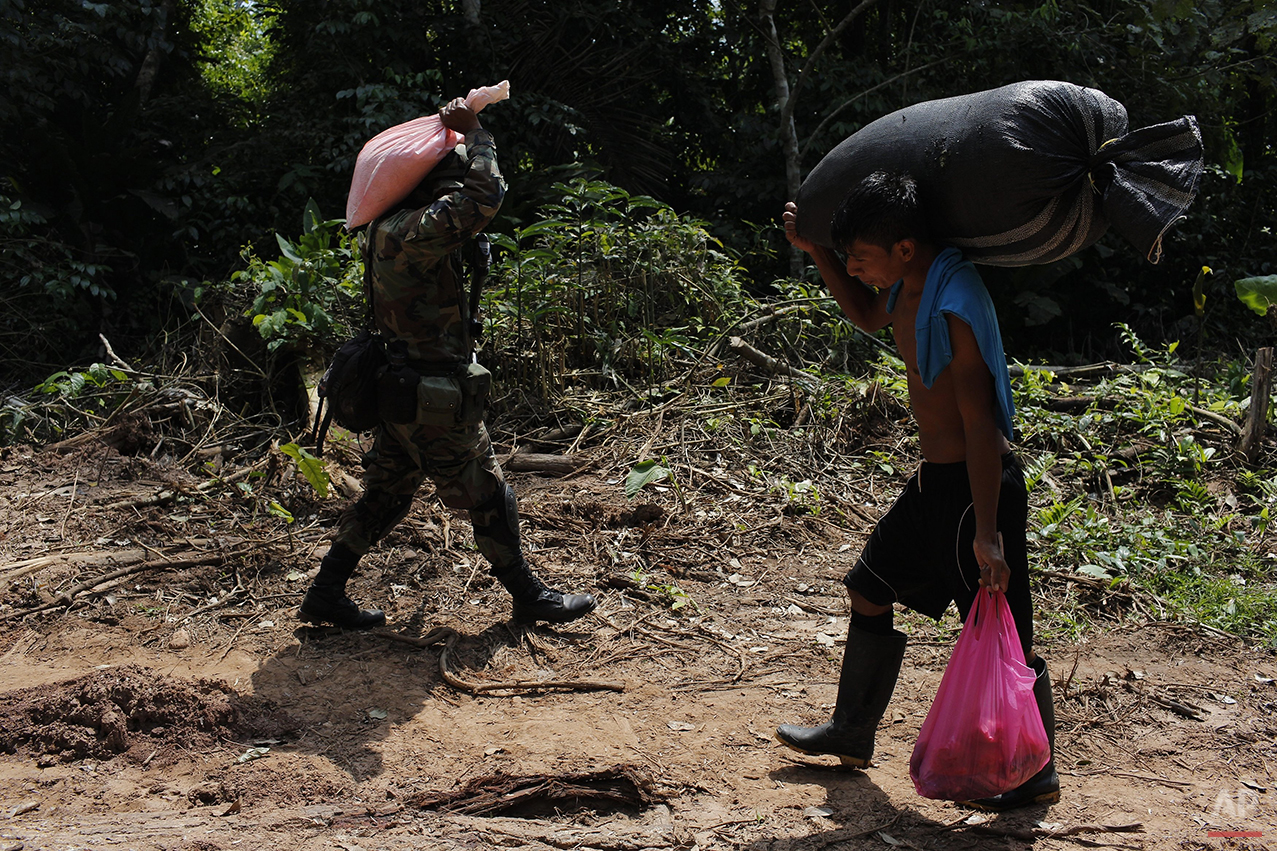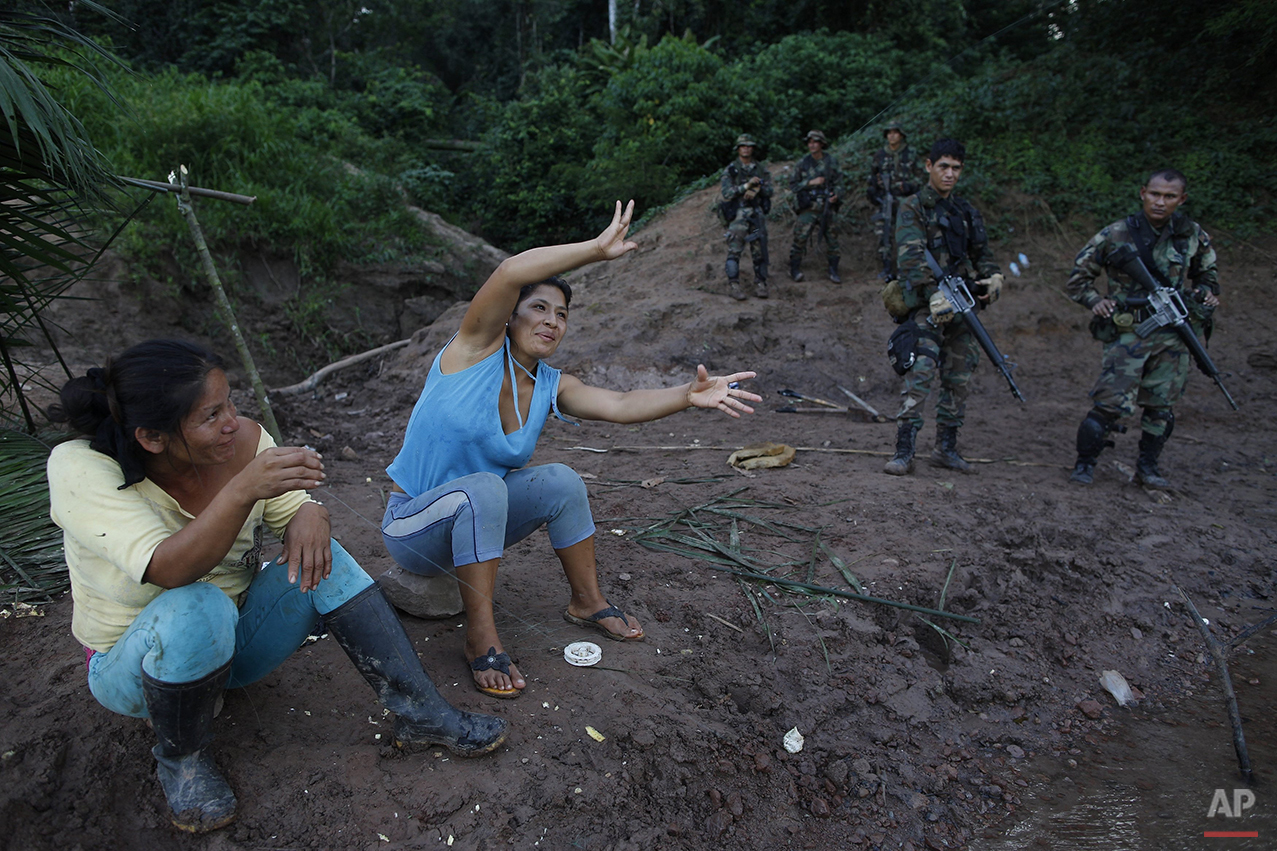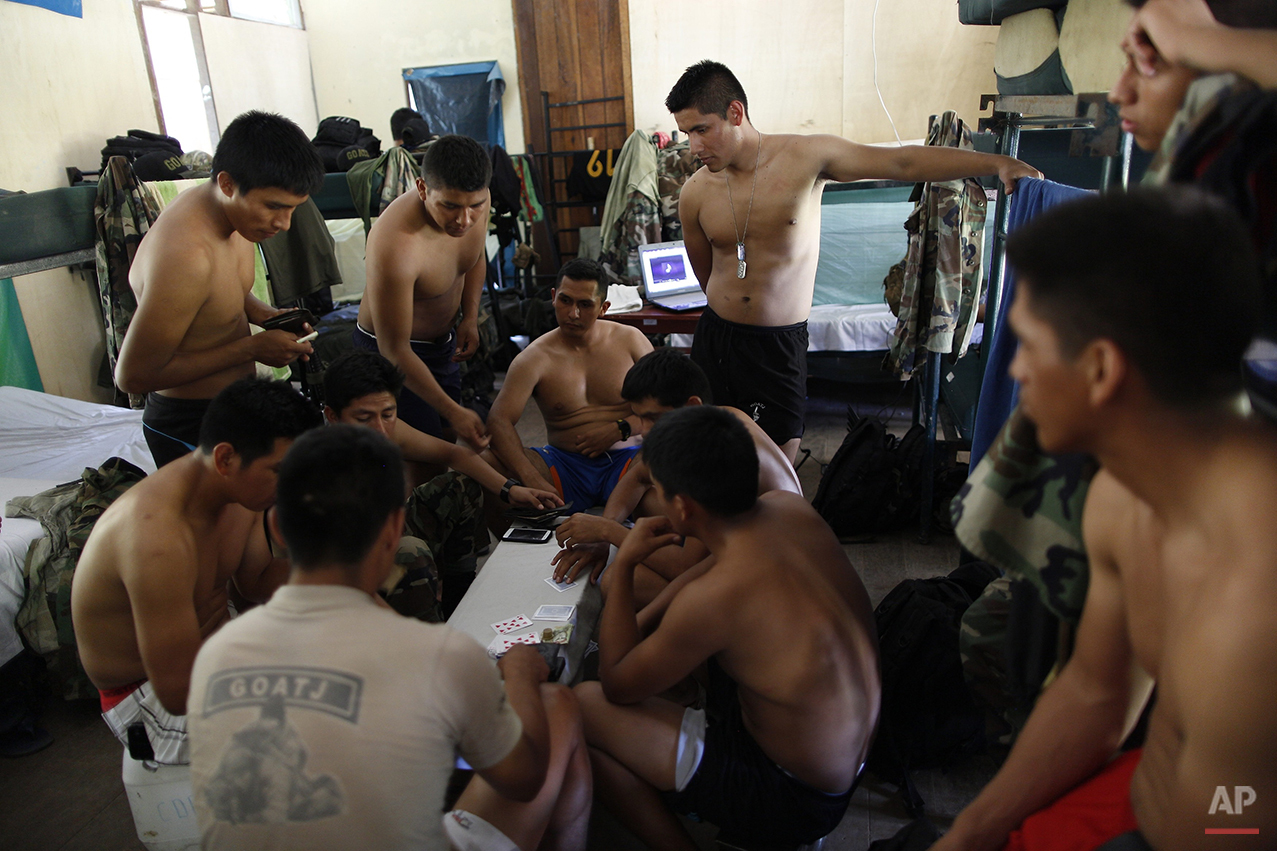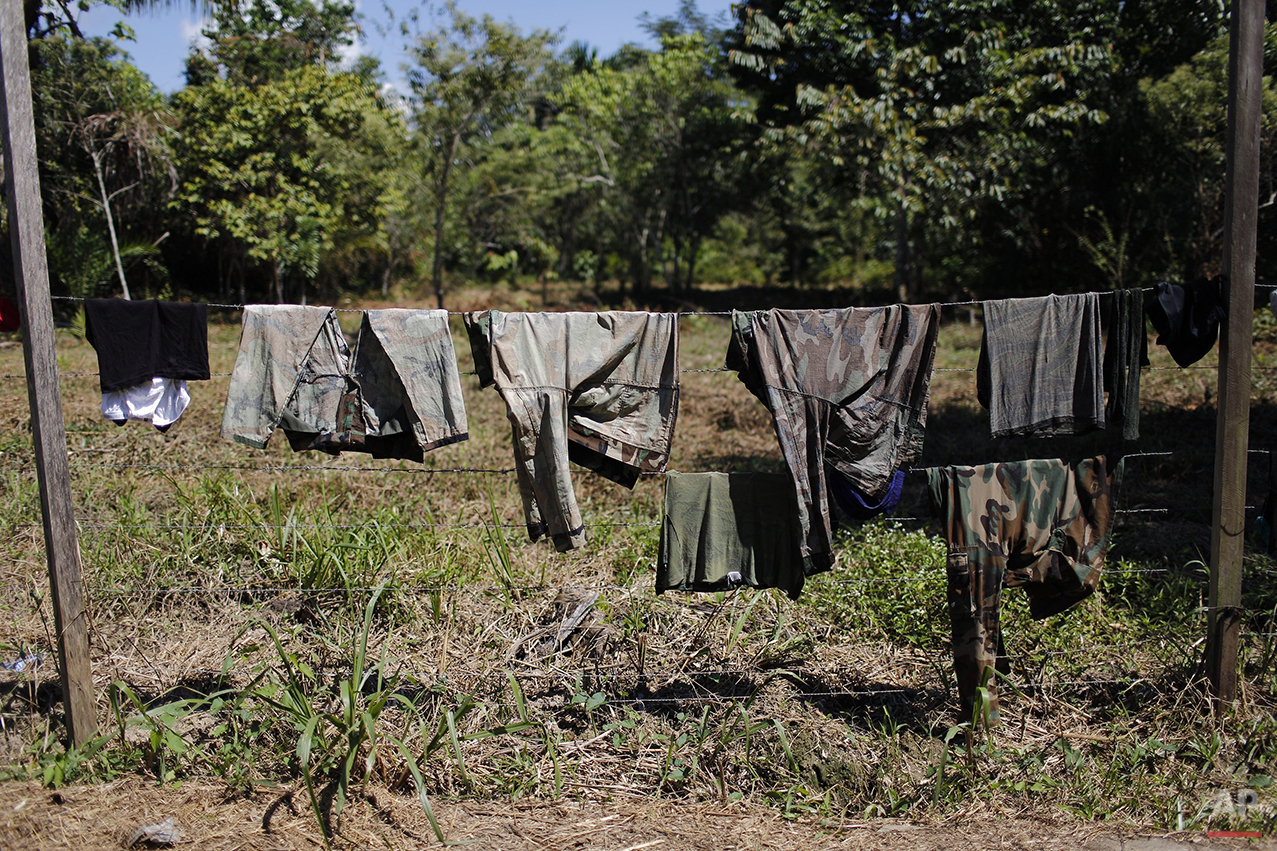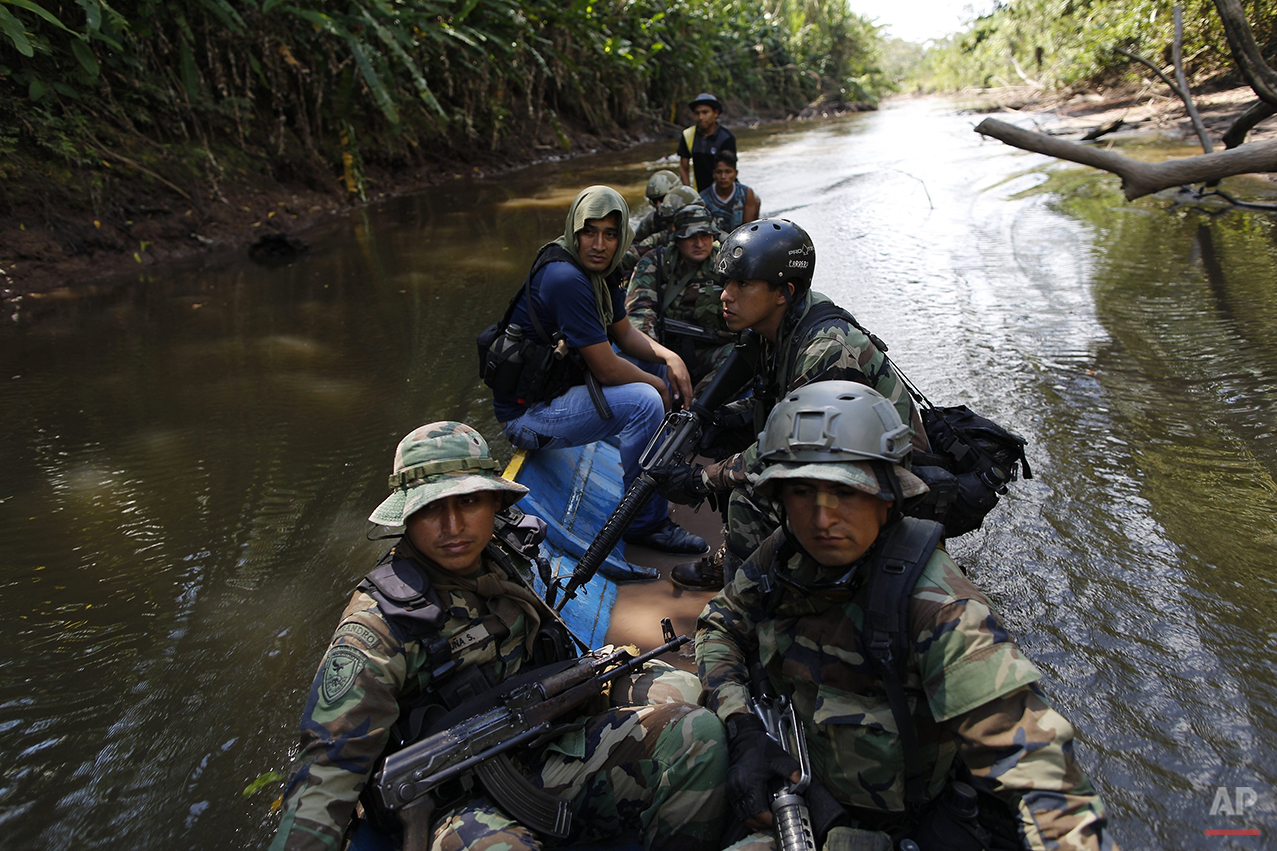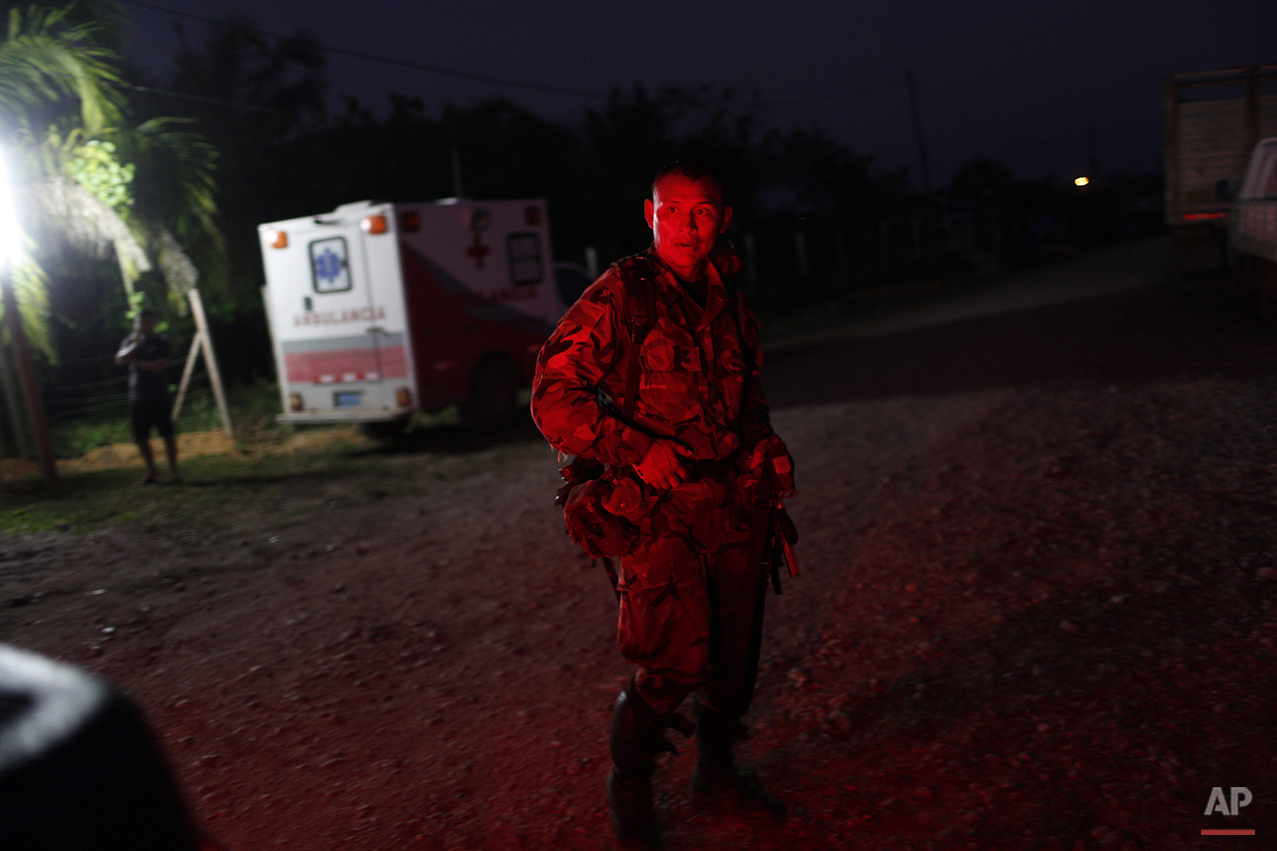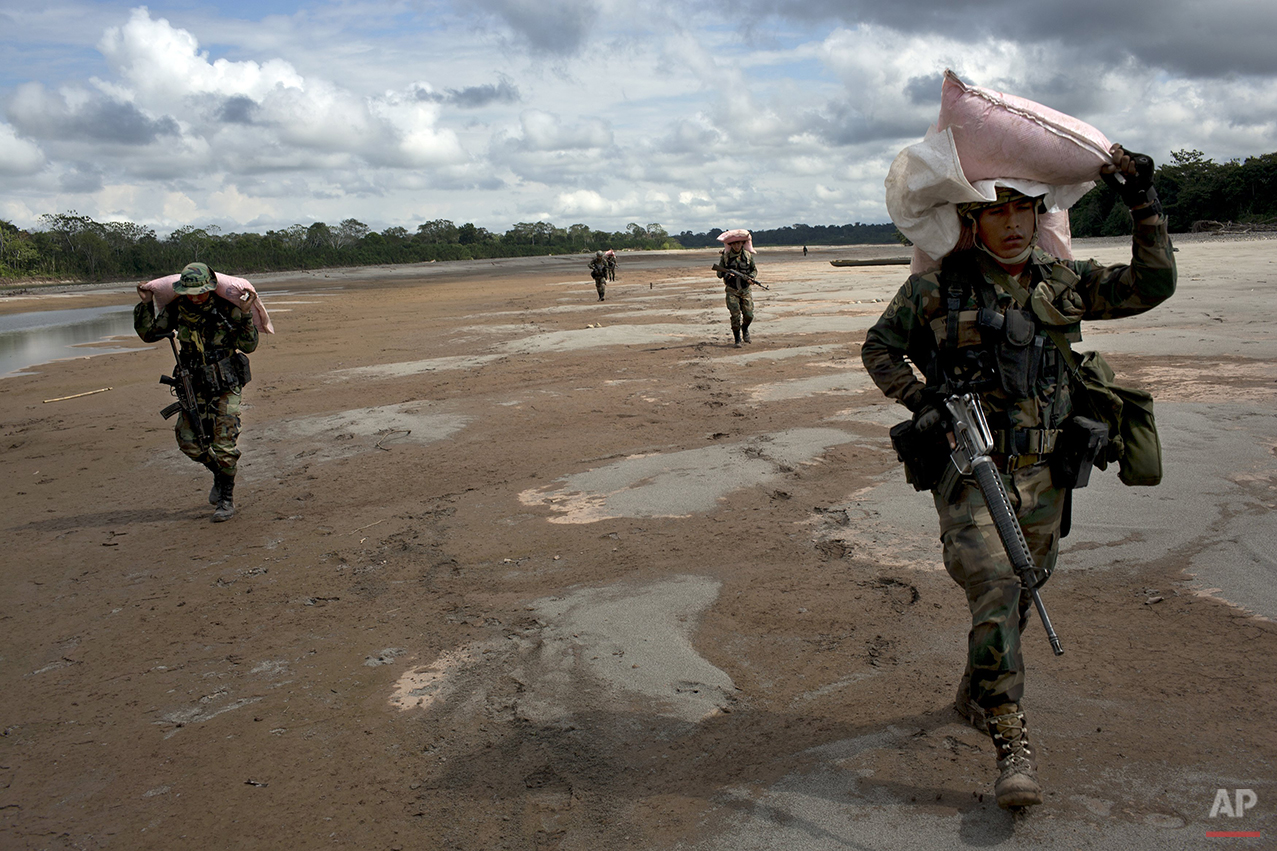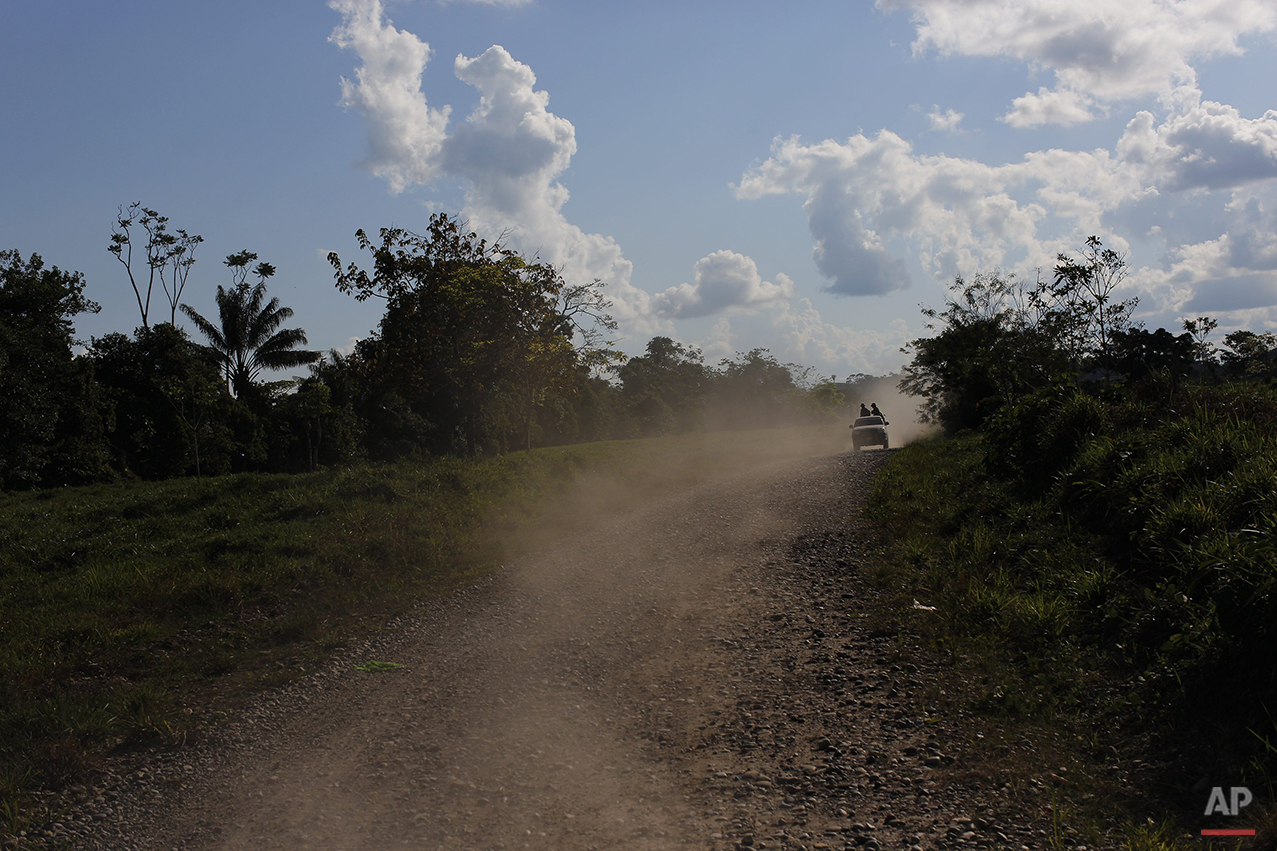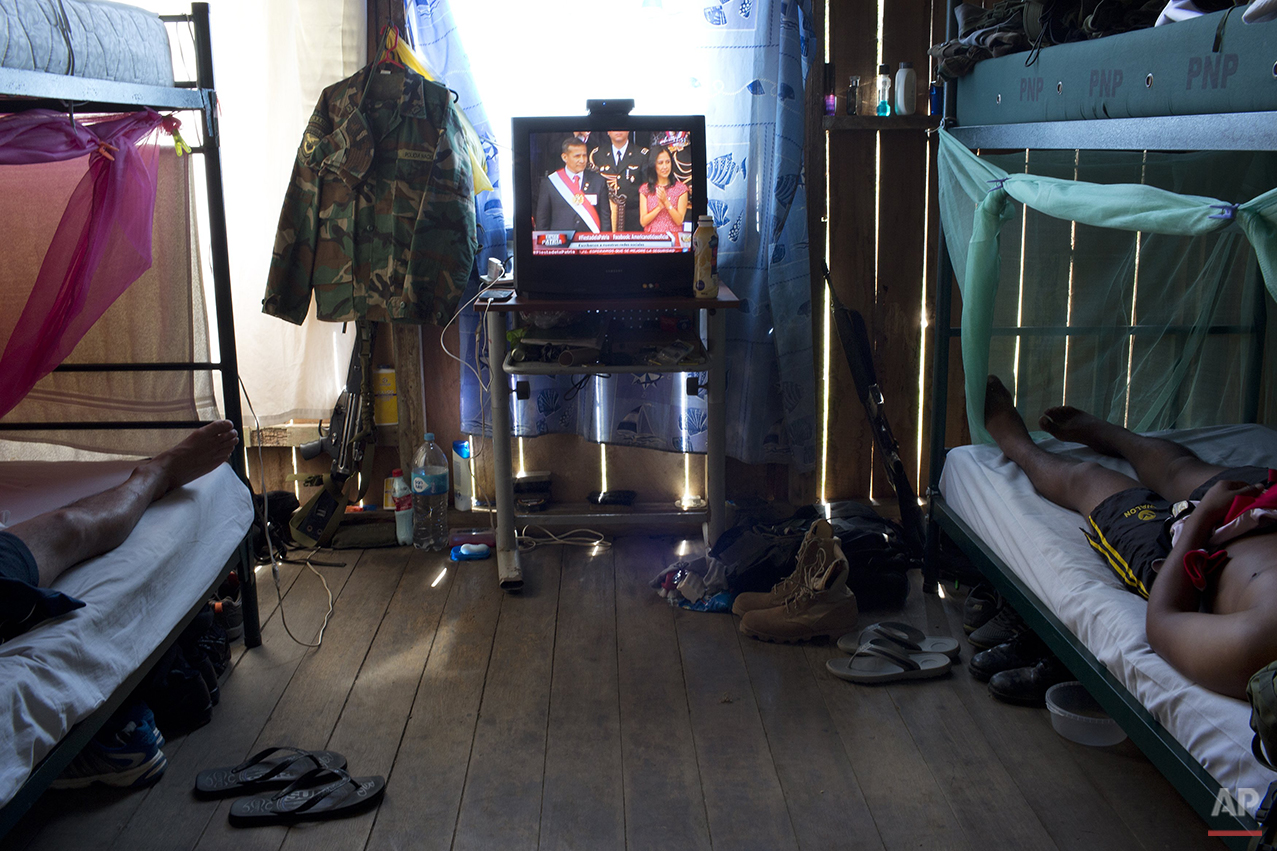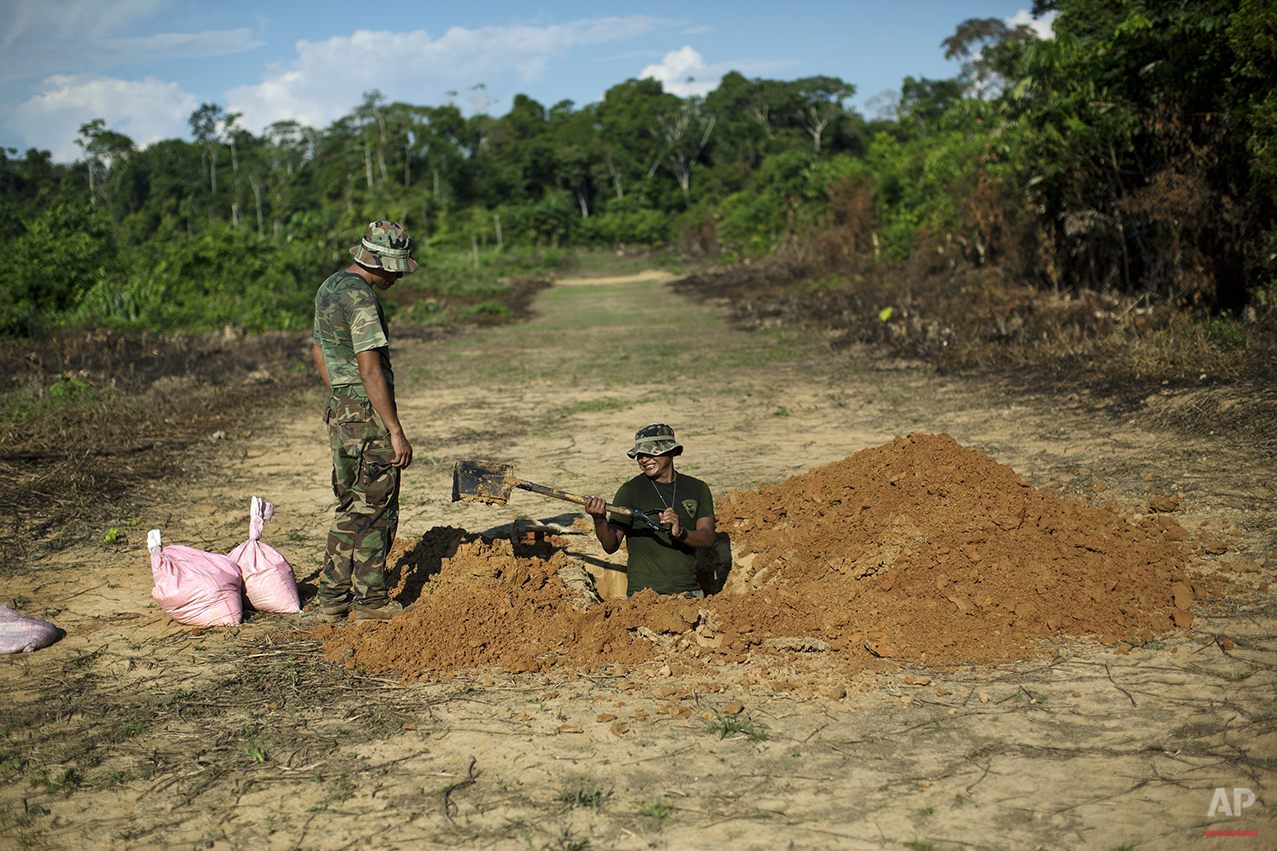Peru's Jungle drug cops

The elite police who work in the dense central jungles of the world's No. 1 cocaine-producing nation regularly raid the pits in which coca leaves are processed into the paste used to make the drug.
They also seize the chemicals used in cocaine refining. Less often, they'll take down a lab.
Lately, the camouflage-clad cops have been using explosives to blow holes in the clandestine airstrips that small planes use to retrieve loads of cocaine.
Blasting craters in runways only briefly interrupts the so-called "air bridge" that police say moves more than a metric ton of cocaine a day to Bolivia on Cessna 206s. Traffickers pay local residents to promptly fill the huge holes.
The narcotics police, who earn about $800 a month, are all men and mostly under 30. The Tactical Anti-Drug Operations Group to which they belong numbers ninety and includes paramedics, sharpshooters and scuba divers.
"They always work in operations of high-risk — physical, tactical and mental," said police Col. Victor Zanabria, the group's commander for the Alto Huallaga region including Ciudad Constitucion. "There's always the possibility of a firefight in the middle of the jungle."
On one recent airstrip-blasting mission, a few dozen police armed with assault rifles left the base in three pickup trucks. They slowly negotiated rutted, muddy roads and forded streams. A two-hour walk through dense jungle followed, the cops pushing along 25-kilogram (55-pound) sacks of ammonium nitrate explosives.
Reaching the Palcazu River, they persuaded a boatman to take them to the other side in a narrow dugout. Back on shore, there was one more hour's walk.
The police located the landing strip with a GPS receiver, then dug a 1.5-meter-deep (almost 5-foot-deep) crater and set the explosives. The blast hurled dirt skyward.
Repairs that will render the airstrips usable again can take three days, sometimes less, depending on the traffickers.
Peru has been spending $8.4 million a year on blasting holes in clandestine airstrips — targeting 366 landing strips since 2012, said Rep. Emiliano Apaza, president of Congress' defense committee. But it hasn't stopped the drug flights.
Last week, Congress passed legislation authorizing Peru's air force to begin shooting the aircraft down.
Text from the AP news story, AP Photos: Elite Peru drug cops blast air strips, by Franklin Briceno.
Follow Rodrigo Abd | Twitter | Instagram
Spotlight is the blog of AP Images, the world’s largest collection of historical and contemporary photos. AP Images provides instant access to AP’s iconic photos and adds new content every minute of every day from every corner of the world, making it an essential source of photos and graphics for professional image buyers and commercial customers. Whether your needs are for editorial, commercial, or personal use, AP Images has the content and the expert sales team to fulfill your image requirements. Visit apimages.com to learn more.
Written content on this site is not created by the editorial department of AP, unless otherwise noted.
AP Images on Twitter | AP Images on Facebook | AP Images on Instagram

